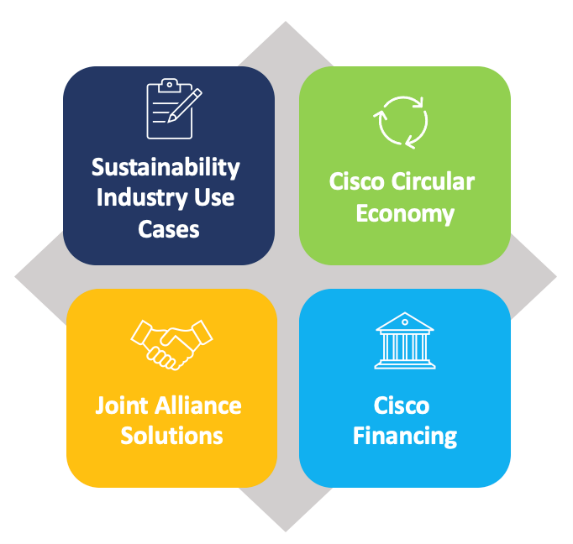As climate change and the impacts of the carbon-based economy are becoming a centerstage conundrum across the globe, driving shareholder value is no longer the only goal for financial institutions (FIs). There is pressure from shareholders, consumers, employees, and regulators for organizations to move towards a more sustainable future, and to set ambitious greenhouse gas (GHG) emissions reduction goals. FIs are in a position to help build and accelerate sustainable development.
By creating sustainable financial offers, prioritizing green investment mechanisms and reallocation of capital, financing sustainable programs, and tracking the carbon footprint tracking of transactions, FIs can incentivize the integration of sustainability criteria into financial services decision-making. This can help accelerate long-term investment in sustainable economic activities and projects. According to Capgemini, nearly a third of consumers are willing to pay an additional charge for green banking products and services or shift to a new provider for environmentally and socially friendly products.
Many FIs are developing sustainability strategies which rely significantly on technology for operational transformation. On average, 65% of customers want their banks to reduce their carbon footprints by consuming renewable energy, following paperless processes, and offering biodegradable cards as noted in the World Fintech Report (pg. 32).
Relevant solutions that FIs are focusing on for reducing their GHG emissions range from hybrid work and remote banking technologies for reducing staff and customer travel, to smart buildings, energy efficient branches, and sustainable data centers that are energy optimized and play a critical role for meeting their GHG emission reduction goals.
Digital technologies are critical to these sustainability solutions. Capgemini states that building a green and sustainable banking, financial services and insurance value chain will require transition to ‘Green IT’ or environmentally sustainable computing practice. Embracing eco-friendly innovations around algorithmic efficiency, virtualization, and asset and resource optimization will help balance ongoing rapid transformation and sustainability.
As a major technology provider, Cisco has set a goal to reach net zero GHG emissions across its value chain by 2040 by reducing absolute scope 1, 2, and 3 GHG emissions 90% from a FY2019 base year, and neutralizing any remaining emissions by removing an equal amount from the atmosphere. Cisco is transforming many of its own offices and data centers to be more sustainable. For example, Cisco’s Penn 1 Plaza New York City office retrofit simplifies building management, reduces operational costs, and enables a hybrid work environment. And Cisco is expanding its smart building capabilities to other campuses including Atlanta, Chicago, and Paris. All global Cisco data centers are powered by 72% renewable energy, and from 2016 to 2021, Cisco has seen a 40% reduction in data center power use. A San Jose data center retrofit consolidated 37 racks of previous-generation Cisco UCS servers and third-party storage into six racks of Cisco HyperFlex HX-Series servers and backup storage. Data center power and cooling loads decreased by 59%.
Cisco is using these same solutions, and others, to help FIs in their sustainability journey. We offer specific industry use cases including hybrid work and sustainable and smart facilities, bringing the same solutions and technologies that we are implementing in our own operations, facilities, and buildings to FIs.

In our circular journey, Cisco is evolving to a regenerative, circular model in which we reduce the resources we consume and the waste we generate. That includes product design, materials, packaging, energy consumption, product take back, repurpose, reuse, recycle, and resale through Cisco Refresh.
We have developed strategic alliances with industry partners that enable us to be ‘better together’ and offer integrated solutions that enable greater sustainability outcomes. A notable example is our partnership with Schneider Electric who recently won the first place award in Cisco’s Partner Sustainability Challenge. Through this key partnership we are developing innovative next generation smart buildings and electric vehicle infrastructure technologies.
Cisco also offers a variety of funding options to help accelerate sustainability projects for FIs, such as Country Digital Acceleration, Industry Lighthouse Funding, Cisco Green Pay, Global Infrastructure Fund, and Cisco As-A-Service.
Sustainable finance will play a key role in the transition to a low-carbon economy. Forward-thinking FIs are analyzing their impact, aligning sustainability metrics with emerging long-term value and investments, and setting GHG emissions reduction goals. Cisco has a purpose to Power and Inclusive Future for All. We can assist the financial services industry with solutions that support their sustainability journey and goals.
Additional Resources
Cisco Portfolio Explorer: Financial Services
Cisco Environmental, Social, and Governance (ESG) Reporting Hub
Cisco Commits $100 Million to Help Address Climate Crisis

CONNECT WITH US